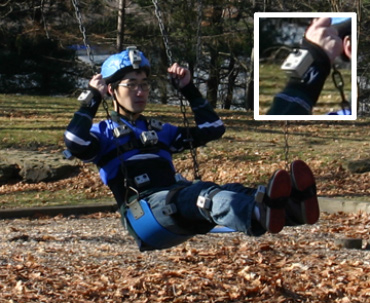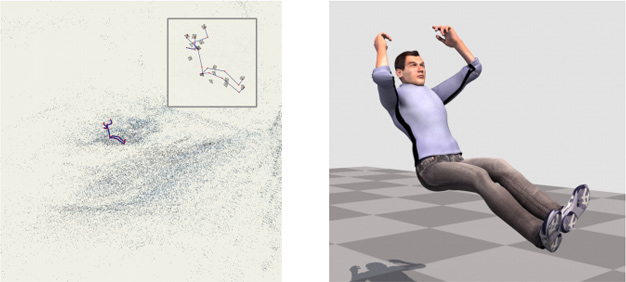By now, we’ve all seen behind-the-scenes footage of motion capture in action — an actor clad in a monochrome jumpsuit and the occasional handful of colored balls, spouting off dialogue and gesticulating wildly. It used to be that such work could only be done within the confines of a studio, a closed space where a camera would have as little trouble as possible picking up those little points of articulation, in hopes of translating them into lifelike movement for a CGI bobcat or something. Now, according to Disney Research Pittsburgh and Carnegie Mellon University, a recent breakthrough will allow mocap to take place just about anywhere.
The big idea? Instead of actors being filmed by cameras, the actors wear the cameras.
By attaching about 2 dozen tiny cameras to actors’ bodies, filmmakers will be able to capture movement that may not be feasible in enclosed spaces. Imagine a long, drawn-out chase scene: instead of having multiple takes of a guy jumping over a trashcan and leaping for a fire escape being stitched together, the body-mounted system could record all the video data needed in one go.
The technique, called “Structure from Motion”, isn’t quite there yet though. It hinges on precise placement of those cameras on the body, which are then calibrated with external reference structures. Once the video data is collected, it’s all processed to create a moving skeletal structure that replicates the wearer’s movements, but it comes at a cost. It requires a considerable amount of computing power to produce the finished product, and at this point a minute of footage may require up to a full day of rendering.
Takaaki Shiratori, a post-doc associate presenting the technique at SIGGRAPH 2011, says “anyone will be able to do motion capture in the not-so-distant future.” A bold claim, to be sure, but where’s the fun in innovation if you can’t wildly speculate about the future?
Given the type of equipment involved, we may even see homegrown mocap sooner than we think. GoPro cameras, while not cheap, perform impressively when mounted on the end of a sword or a hula hoop, so what’s to stop an impressionable young filmmaker with a credit card from buying a ton and strapping them to his or her body? The software required would be a stumbling block for sure, but if it happened to go open-source, just imagine what some imaginative up-and-comer could do.

